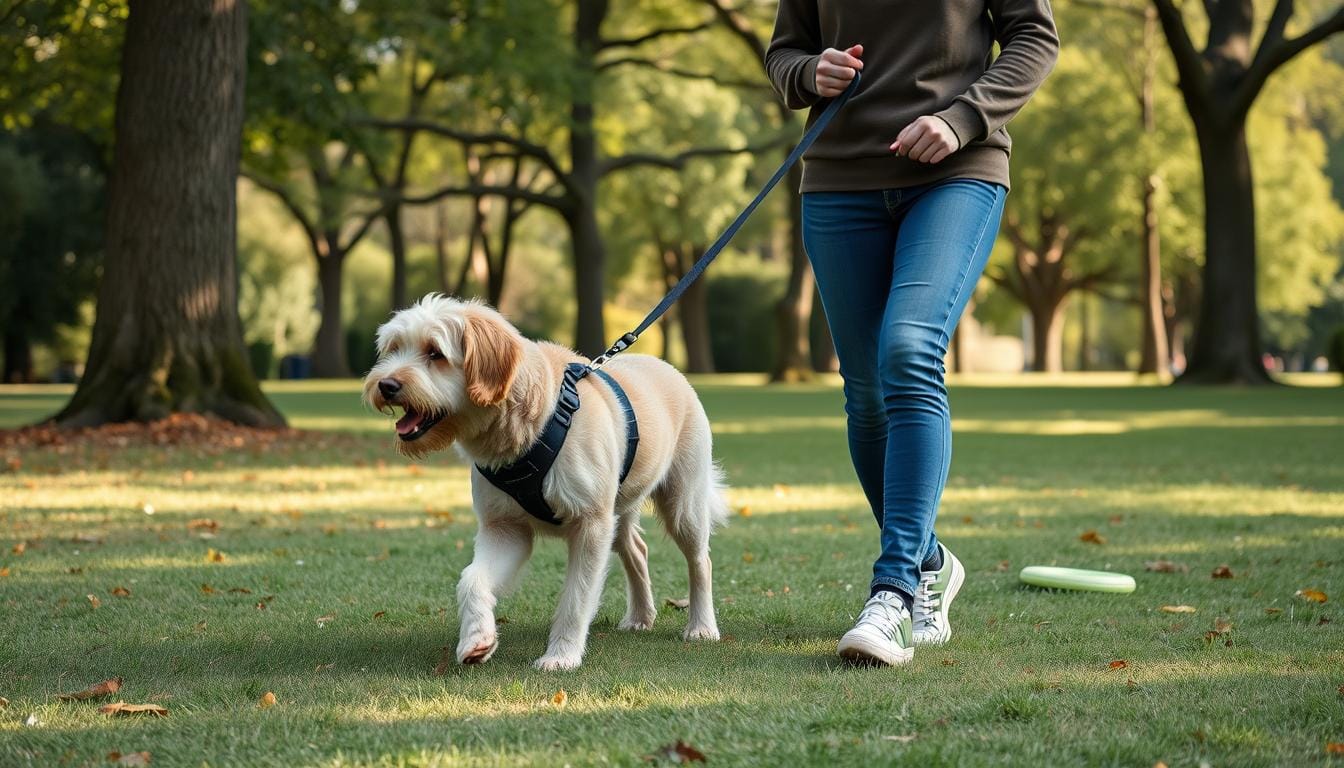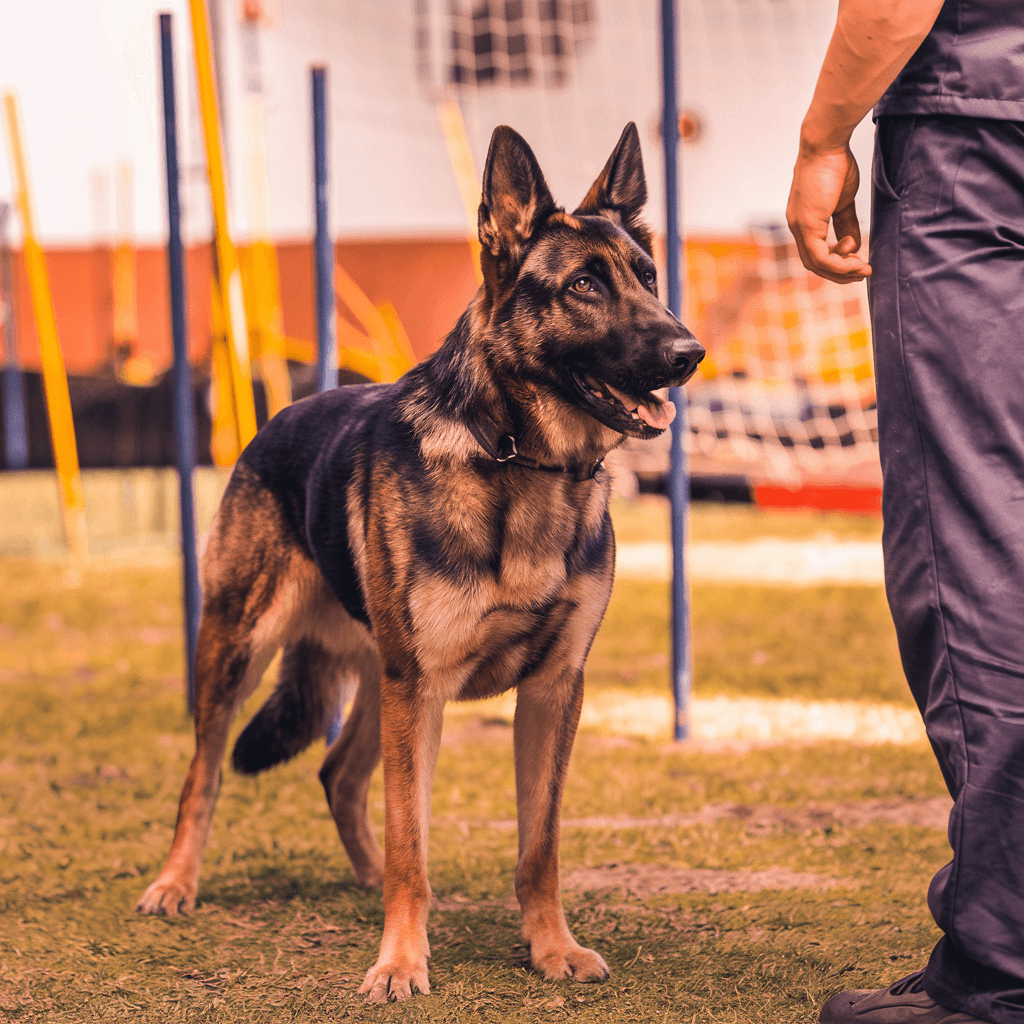Dogs can sense human emotions instinctively. They can pick up on our feelings before we even know them. Dogs use subtle cues like tail wags and ear positions to communicate with us.
This silent language strengthens the bond between humans and dogs. Want to learn more about canine emotional intelligence? Join us as we explore the fascinating world of dogs and their human families.
Understanding our dogs’ eating habits is key to their health. Dog fasting and changes in appetite can be normal or signal issues. As pet owners, we must recognize the signs of healthy fasting versus unhealthy loss of appetite.
Fasting in dogs can have health benefits. It may boost longevity, help detoxify, and fight infections. But how long can a dog safely go without eating? And when should we worry? We’ll explore the science behind canine fasting and its effects on pet health.
Key Takeaways
- Dogs can typically survive 3-5 days without food if they’re healthy and drinking water.
- Loss of appetite can indicate illness, especially when accompanied by other symptoms.
- Small dogs should not go more than 3 days without eating.
- Post-surgery appetite loss is common but should be monitored closely.
- Consult a vet if your dog hasn’t eaten for multiple days or shows signs of illness.
Understanding Fasting in Dogs
Fasting in dogs is a natural behavior seen in their wild ancestors. We’ll look into what canine fasting means, its link to dog eating habits, and the difference between fasting and starvation.
What is fasting in dogs?
Canine fasting is when dogs choose not to eat for a while. This can last from a few hours to days. It’s key to remember that dogs still need water, which is vital for their health.
Natural fasting behaviors in wild canines
Wild dogs often fast between hunts. This pattern is part of their biology. Even though domesticated dogs eat carbs, some may still benefit from fasting.
Differences between fasting and starvation
Fasting and starvation are not the same for dogs. Fasting is a short, controlled period that might be good for health. Starvation, however, is long and bad. Healthy adult dogs can go weeks without food but should never go without water for more than a few days.
“80% of a dog’s immunity is in the gut. Fasting can provide a protective effect and speed healing with bacterial infections.”
Knowing about canine fasting helps us make better choices for our pets’ diets and health.
The Science Behind Canine Fasting
Fasting in dogs leads to interesting changes in their bodies. We’ve found some cool facts about dog metabolism and digestion during fasting.
Metabolic Changes During Fasting
When dogs fast, their bodies start using ketones instead of glucose for energy. This change helps remove toxins and clean cells. Studies also show fasting can lower blood pressure and heart rate, which might improve heart health.
Impact on the Digestive System
Fasting lets the digestive system rest and heal. This can make digestion more efficient when dogs start eating again. It’s important to remember dogs can safely fast for up to five days. But they should not fast for more than 48 hours to avoid starvation.
Potential Health Benefits of Controlled Fasting
Fasting could have many health benefits for dogs. It might improve insulin sensitivity and reduce inflammation. A study on Labradors found they lived about 2 years longer on a restricted-calorie diet. Fasting also boosts the immune system by increasing macrophage activity.
| Condition | Impact of Fasting |
|---|---|
| Cancer | May reduce risk (50% of dogs die from cancer) |
| Obesity | Can aid weight loss (40% of dogs are obese) |
| Inflammation | Reduces due to lower insulin levels |
| Longevity | Potential increase in lifespan |
These findings are promising, but more research is needed. Always talk to a vet before starting a fasting plan for your dog.
How Long Can a Dog Go Without Eating?
Knowing how long a dog can fast is key for their safety. Healthy adult dogs can usually go without food for three to five days. But, it’s not good to let them fast for too long. We’ll look at what affects a dog’s fasting time and when you should worry.
The time a dog without food can safely last changes with age, size, and health. Here’s a quick guide:
- Adult dogs: 3-5 days (with water)
- Puppies (over 8 weeks): 12 hours
- Puppies (under 8 weeks): 5 hours
Remember, these are the longest times a dog can fast safely. Fasting for too long can cause serious health problems.
| Dog Type | Safe Fasting Duration | Risk Factors |
|---|---|---|
| Healthy Adult | 48 hours | Dehydration after 24 hours |
| Puppies | 5-12 hours | Hypoglycemia, rapid dehydration |
| Small Breeds | 24-36 hours | Hypoglycemia risk |
| Diabetic Dogs | Consult vet immediately | Blood sugar imbalance |
If your dog hasn’t eaten for 48 hours, see a vet. Water is very important during fasting. Without water, dogs can get very dehydrated and even have organ failure.
Always put your dog’s health and safety first. If you’re unsure about fasting, get advice from a vet.
Signs of Healthy vs. Problematic Fasting
Dogs might skip meals or eat less sometimes. This is normal and doesn’t always mean they have appetite problems. We’ll look at the difference between healthy and unhealthy fasting. This will help you know when to get your pet to the vet.
Normal Fasting Behaviors
Some dogs naturally fast for short times. Big dogs like Great Danes can go up to five days without eating because they eat slower. But, small dogs and puppies need to eat more often to stay healthy.
Red Flags Indicating Health Concerns
Look out for these signs that might mean your dog is really sick:
- Refusal to eat for more than 24 hours
- Lethargy or decreased activity
- Vomiting or diarrhea
- Rapid weight loss
- Signs of pain or discomfort

When to Consult a Veterinarian
Get your dog to the vet if they:
- Have not eaten for more than 24-48 hours
- Show any of the red flags mentioned above
- Are a puppy or small breed fasting for more than 12 hours
- Have health problems like diabetes
| Breed Size | Safe Fasting Period | Risk Factors |
|---|---|---|
| Small (e.g., Chihuahuas) | 2-3 days | Hypoglycemia |
| Large (e.g., Great Danes) | Up to 5 days | Slower metabolism |
| Puppies | 12 hours max | Growth needs, hypoglycemia |
| Sick dogs | 3-5 days | Depends on condition |
Remember, fasting for too long can be very dangerous. Always put your dog’s health first and get help when you’re unsure.
Common Reasons for Loss of Appetite in Dogs
Dogs not eating can worry pet owners a lot. Many dogs face a problem where they don’t want to eat. Knowing why dogs refuse food can help solve the issue.
About 40% of dogs lose their appetite for a short time due to minor illnesses, stress, or changes in their environment. Around 25% of dogs eat less than usual, showing partial appetite loss.
- Illness or pain (30% of cases)
- Emotional distress (20% of cases)
- Aging-related changes (15% of cases)
- Gastrointestinal upset (15% of cases)
- Dental issues (10% of cases)
Most times, dogs not eating is just temporary. If your dog’s eating habits change for more than a day or two, it might be a sign of a health problem. In such cases, it’s best to see a vet.
| Cause | Percentage of Cases |
|---|---|
| Illness or Pain | 30% |
| Emotional Distress | 20% |
| Aging-related Changes | 15% |
| Gastrointestinal Upset | 15% |
| Dental Issues | 10% |
Keep an eye on changes in your dog’s water intake, energy levels, vomiting, diarrhea, weight, and behavior. Most healthy dogs can skip a few meals without harm.
Encouraging Dogs to Eat: Practical Tips
Is your furry friend not interested in food? We have some tips to boost your dog’s appetite and improve their eating habits. Let’s find ways to make mealtime more exciting for your dog.
Adjusting Feeding Schedules
Consistency is crucial for mealtimes. Set a regular schedule for feeding to make your dog look forward to it. Don’t leave food out all day, as it can make them picky.
Trying Different Food Textures and Temperatures
Some dogs like variety in their meals. Try mixing wet and dry food to add texture. Warming the food a bit can also make it more appealing, thanks to the smell.

Using Positive Reinforcement Techniques
Make mealtime a positive experience for your dog. Give them praise and gentle encouragement. You could even try hand-feeding to strengthen your bond.
| Technique | Description | Effectiveness |
|---|---|---|
| Food Rotation | Rotating different types of dog foods or flavors | High |
| Tasty Toppers | Adding appetizing toppings to meals | Medium to High |
| Exercise Before Meals | Light activity to stimulate appetite | Medium |
| Consistent Mealtimes | Feeding at the same times daily | High |
If your dog hasn’t eaten in 24 hours or is losing weight, see a vet. They can check for health issues and offer advice tailored to your dog.
Nutritional Considerations During Fasting Periods
When you start a fasting diet for your dog, keeping their nutrition right is key. Fasting mimics how wild canines eat, which might help their health. Research shows it can boost their immune system and help them heal faster.
Always give your dog fresh water during fasting. This keeps them hydrated and helps with detox. When you start feeding them again, start with small, easy-to-digest meals. This helps them get back to their usual diet smoothly.
Here are some tips for fasting dogs:
- Give them nutrient-rich foods after fasting
- Stick to a balanced diet, as your vet suggests
- Don’t give treats during fasting times
- If your dog takes medicine, use daily restricted feeding
Fasting lets the body focus on healing. It doesn’t spend energy on digesting food, helping get rid of toxins.
Studies say fasting can be good for dogs. A study showed dogs fasting on and off lost more weight and had better blood sugar levels.
| Fasting Method | Duration | Potential Benefits |
|---|---|---|
| Complete Fast | 24-48 hours | Mimics natural patterns, aids healing |
| Time-Restricted Feeding | 8-hour eating window | Daily 16-hour fast, may improve health |
| Occasional Fasting | Varies | Supports detox, boosts immune function |
But, fasting isn’t for every dog. Talk to a vet before starting any fasting plan. This is especially true for puppies, small breeds, or dogs with health problems.
When Fasting is Not Recommended for Dogs
Fasting can be good for some dogs, but not all. It’s important for pet owners to know the risks. We’ll look at when fasting is not safe due to age, health, and breed.
Age-related Restrictions
Puppies under 18 months should not fast. Their bodies need food to grow. Pregnant or nursing dogs also need regular meals for their puppies.
Health Conditions That Contraindicate Fasting
Dogs with certain health issues should not fast:
- Diabetic dogs need regular meals to keep their blood sugar stable
- Dogs with insulinomas risk low blood sugar if they don’t eat
- Pets with acute vomiting or gastroenteritis may need special diets
Breed-specific Considerations
Some breeds need special care when fasting:
- Very small or toy breeds may be prone to low blood sugar
- Giant breeds with rapid growth might need more meals
Always talk to a vet before starting fasting for your dog. Your vet can help with diets that fit your dog’s needs. They’ll also consider any fasting risks.
Conclusion
Understanding the benefits of fasting for dogs is key for pet owners. We’ve looked into how fasting works in dogs and its effects on their health. It’s important to be careful and adjust fasting plans for each dog’s needs.
Puppies need different food than adult dogs. They should not fast for more than 3-10 hours, based on their age. Newborns need milk every 2 hours to avoid low blood sugar and dehydration. As puppies grow, they can fast longer, but should never go without water for more than 6 hours.
For adult dogs, fasting can be part of a healthy routine. But, it’s crucial to watch for signs of distress and seek vet advice when needed. With vet visits costing between $50 and $200, it’s smart to focus on keeping your dog healthy to save on vet bills. By ensuring your dog gets the right food, regular vet visits, and understanding their fasting needs, you can help them live a longer, healthier life.
















